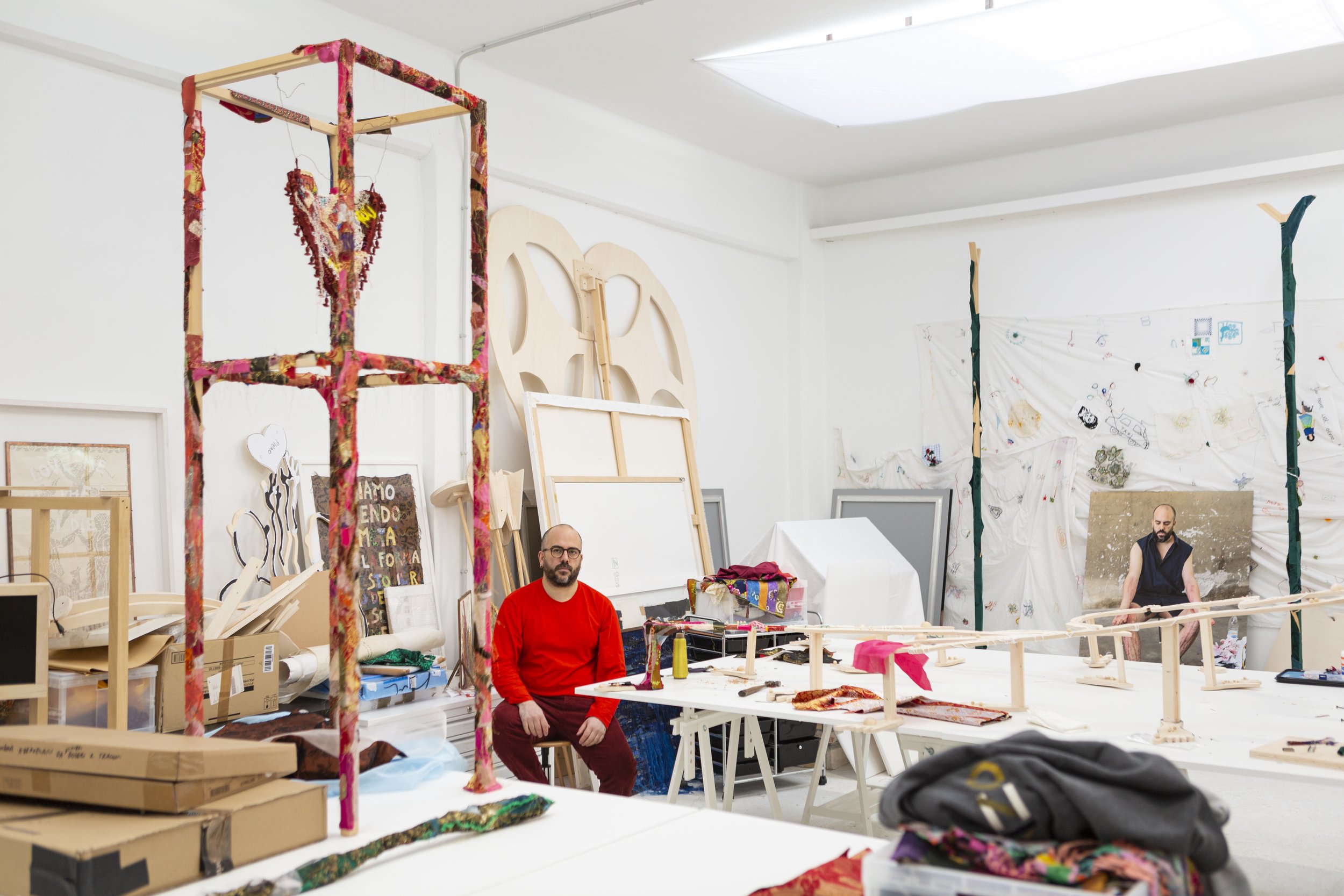
Born in Oristano, IT, 1986
He lives and works in Turin, IT
Moving between performance and the creation of textile works, between physical and collective actions, Ruben Montini articulates a complex thought which, if on one hand is ephemeral and romantic, on the other it is one of the main narrative voices of today's battles of the LGBTQ+ community in Italy. Performance after performance, his body tends more and more to become a simulacrum of signs and traces of what LGBTQI+ people still suffer today within contemporary society. While developing his actions and his textile works, Montini has begun to produce some collective projects in which he strives to involve the public in the production of temporary monuments and rituals that become ephemeral memorials for the minority of his community.
Italian philosopher Lorenzo Bernini writes: “Ruben Montini’s work is political even when it is intimate. Or, political because it’s intimate: As a gay man and heir of feminism, when Montini considers the universal he begins with himself, he protests the evils of the world by anchoring them to his personal experiences of injustice. Beginning from and returning to his body, he leaves little to abstraction.”
So as Eugenio Viola argues: “In the last fifteen years, Ruben Montini’s research has been developing coherently by directly attacking the heteronormative stereotypes linked to sex, sexual orientation and gender identities. He has been facing uncomfortable, yet current and critical subjects, by using performance as the preferred medium. These characteristics have determined the outcomes of a precise aesthetic strategy, which has marked the research of such a complex artist in the world of Italian performance art.
Through the exhibition of his own naked body, flaunted, tattooed, humiliated, and sometimes wounded and bleeding yet glorified, Montini has enacted his Passion, his secular martyrdom. A Via Crucis composed of actions that reveal the topography of an imperfect body, a desacralised Ecce Homo. Montini has engraved on his body the traumas, the pain, and the sufferance the Social Body inflicts on people who are considered ‘different’. It is a foundational part of his work, almost a part of his destiny. (…) In Montini’s oeuvre, the artist’s body coexists with the residues celebrating his body’s absence: performance, photography, and video, together with painting, drawing, installation, and embroidery, mixed with the residual traces of the actions themselves. Embroidery is central in Montini’s multifaceted artistic vocabulary. He re-contextualizes an activity usually connected to women’s duties and often relegated to the “minor arts” while turning it into a tool able to celebrate, ironically and polemically, the subversion of socially accepted norms, as it often happens in the artist’s work. (..) Montini has always used his body as a map of signs, a place to engrave cruel actions alternated to private, intimate moments.”.
His work has been shown widely in international institutions, such as: tranzit.ro/Cluj, Cluj- Napoca, RO; <rotor> centre for contemporary art, Graz, AT; Riga Art Space, Riga, LV; DumBO, Bologna, IT; NOMUS, The New Art Museum, Gdansk, PL; Gallerie delle Prigioni, Treviso, IT; Kunsthalle Bratislava, SK; Casino Luxembourg Forum d’art contemporain, LU; GAMeC, Bergamo, IT; FdG Projects, Brussels, BE; CRUCE Arte y Pensamiento, Madrid, ES; Museum Arnhem, The Netherlands; Villa Adriana, Tivoli, IT; Aleš South-Bohemian Gallery, Hluboká nad Vltavou, CZ; Prometeogallery di Ida Pisani, Milan, IT; Fondazione MACC, Calasetta, IT; Dům umění města Brna, Brno, CZ; MKC, Split, HR; MAN_Museo d’Arte Provincia di Nuoro, IT; Museum Europäischer Kulturen, Berlin, DE; Museum for Contemporary Art Ujazdowski Castle, Warsaw, PL; Centre of Contemporary Art, Torùn, PL; Museo Ettore Fico, Turin, IT; Oratoire du Louvre, Paris, FR; Castello di Rivoli, Turin, IT.
Ruben Montini in his studio, 2022
ph Nicola Morittu